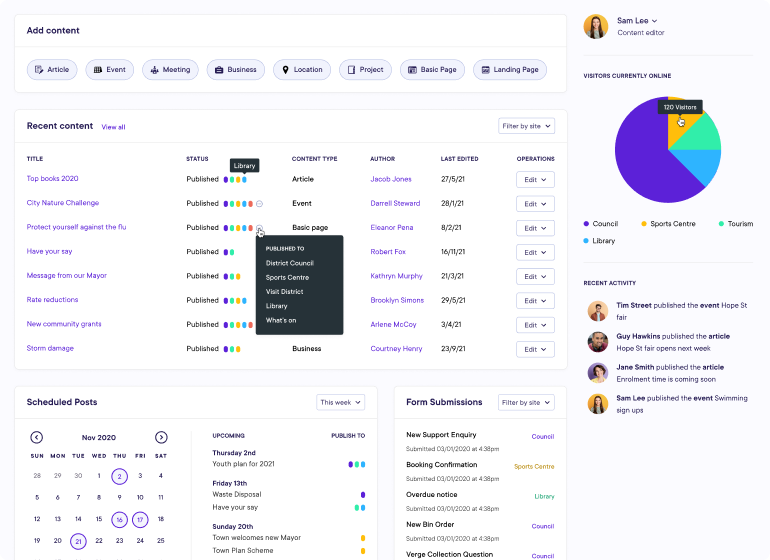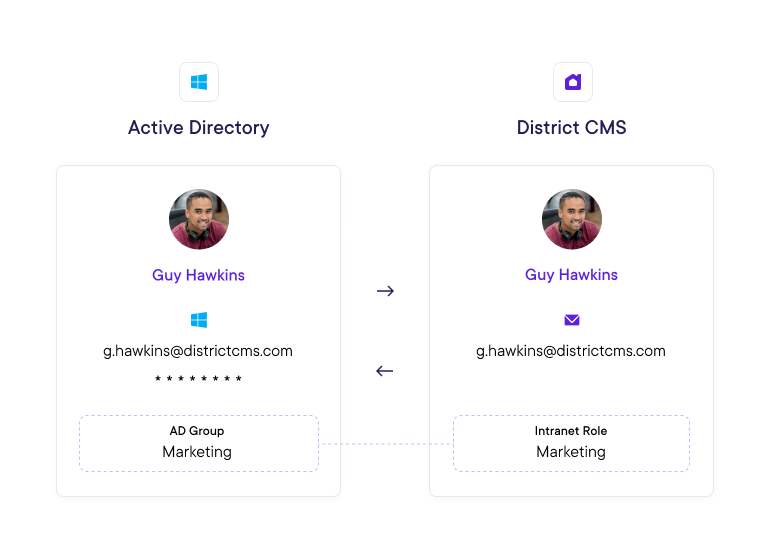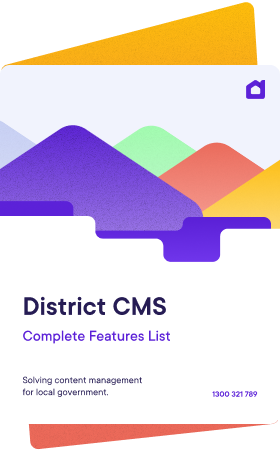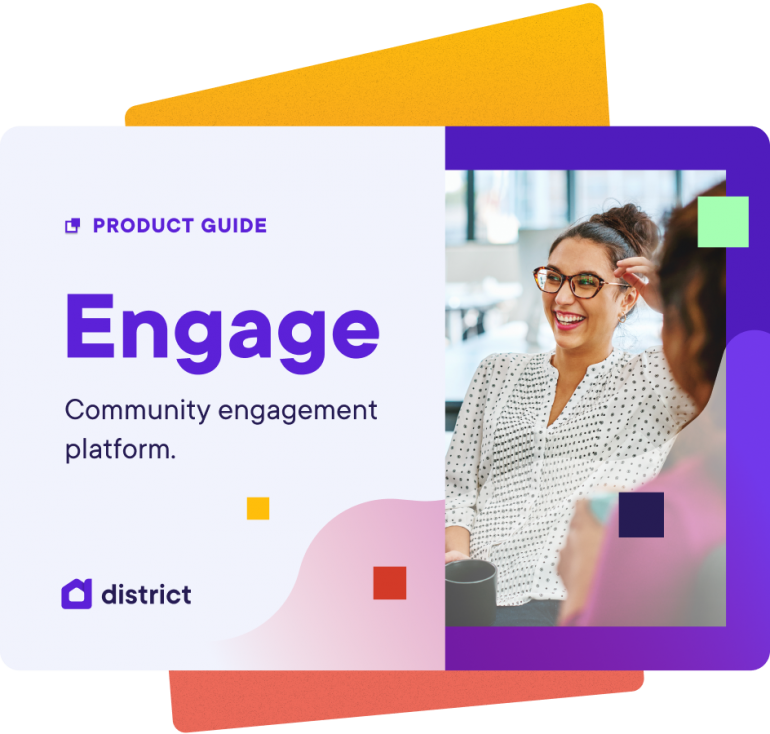Publishing content through multiple CMS websites can significantly increase administration costs
As a government organisation, you’re accountable to your constituents for the ways in which you spend their rates. No organisation wants the bad publicity that comes with being seen as inefficient – even profligate – with their tax payers’ hard-earned money.
Beyond that, the less money you spend on needless administration, the more that’s available for initiatives that genuinely make a difference to your clients. So it seems obvious that avoiding unnecessary admin costs should be a priority focus for any local council.
Unfortunately, if you publish content to multiple websites through multiple content management system (CMS) back-ends, that’s exactly what you’re incurring. Here’s how using a centralised content system like District Content Hub can not only significantly lower your admin costs, but also improve collaboration, compliance and content quality.
Reduce – or even eliminate – data silos for efficiency
Most organisations manage at least three or four websites. For example as a local government agency, you might have one for your library system, another for services like waste collection, managing parks or reserves, another for booking council-owned amenities and a fourth for tourism. And different departments within your overall organisation are probably responsible for creating, updating and managing the content within each website.
While each of these sites will have different individual content, there will be some information that’s shared. Perhaps the tourism site includes information about a local nature reserve attraction, but the information about that reserve is trapped in a silo with the park management department. If so, the staff who manage the tourism site will need to waste time finding and then recreating it in their own content.
District Content Hub can eliminate this wasted time by providing a central repository of information and content assets that are accessible to everyone with the right permissions.
Improve data governance for increased legal compliance
These days, public sector organisations need to comply with a multitude of different acts and standards that mandate (amongst other things):
- how they can create, store and dispose of public records
- how they need to protect personal information
- what metadata they must create and incorporate into any online documents
If departments have to create and manage their content individually, each department must spend an immense amount of time on data governance.
Centralised content management through a solution like District Content Hub significantly reduces the time and effort required to remain compliant.
Control brand identity and share access to digital assets to save time
While each website may have its own visual brand identity and tone of voice, again, some elements will be consistent across your organisation.
However, without access to centralised brand guidelines and shared digital assets (eg. graphics, photos and videos), it’s all too easy for each department to do its own thing. They may continue to use outdated assets, or simply decide to create their own. Over time, this can result in each site’s brand identity growing less and less compliant with your organisation’s overall standard.
At the core of solutions like District Content Hub is the ability to centralise digital asset management. It creates ‘one source of truth’ for all brand and digital assets, and ensures access to that truth for everyone who needs it.
Publish and maintain higher quality content
Efficiently publishing – and then maintaining – high-quality, relevant content requires a standardised, structured process that includes:
- a clear, comprehensive brief
- easy-to-access source material for research
- thorough, timely review by all relevant stakeholders before publishing
- meta-data compliance
- a systematic process of regular review to identify out-of-date content and either update or delete it.
Few organisations have the resources available to manage this process manually. Even if they do, those resources would be far more effectively spent on initiatives that directly benefit their constituents.
Solutions like District Content Hub remove the need for costly, inefficient manual process management by centralising content administration.
Centralise user profiles across multiple websites
The more user profiles each staff member needs to maintain, the more passwords they need to create. And – naturally – the more passwords they have, the greater the likelihood that they’ll forget one.
Requiring staff to maintain multiple profiles across different websites has associated costs. For example, setting up a profile on each site diverts time and focus that they could spend on more productive work – like actually creating content. And if a given staff member leaves or changes position, someone needs to spend time either updating or deleting each of their profiles individually.
The District Platform makes the process far more efficient by enabling users to create and maintain a single profile across multiple websites using single sign on (SSO) platforms such as Microsoft Azure Single Sign-On.
Reduce rework (and content sprawl) by importing third-party content
One mistake that far too many content creators make is assuming that they need to create and maintain everything that appears on their website themselves. Imagine that the department managing the tourism website wants to feature information about an upcoming major local music festival. However, details about the festival change regularly as the organisers confirm new acts, and previously booked artists drop out.
Usually, that department would have two choices. They could spend time recreating all the event information on the tourism website, and then yet more time updating it whenever the organisers released new information. Or they could link to the external site, sending council website visitors away from their own site.
District Content Hub offers a third, far more efficient option: it allows the department to import content from third-party sources like the Australian Tourism Data Warehouse. Then, whenever information updates on the original site, it automatically flows through to the council’s webpage, saving time and effort, while keeping visitors on the site.
As a bonus, it also reduces content sprawl: the tendency of any organisation’s content assets to grow into a disorganised tangle that reduces their value.
Future-proof your investment: book a guided demo today!
District Content Hub is unique amongst other content hub options in that it’s part of an overall suite of solutions developed specifically for local councils an government organisations. So, if you’re interested in expanding out into an engagement platform, smart forms or an intranet later, your content hub will integrate perfectly with them.
Plus, it’s based on an open-source (Drupal) platform, which gives it unprecedented flexibility for further development or integrations down the track.
Let us show you exactly how District Content Hub can save your council significant admin costs while also improving efficiency, compliance and content quality.






